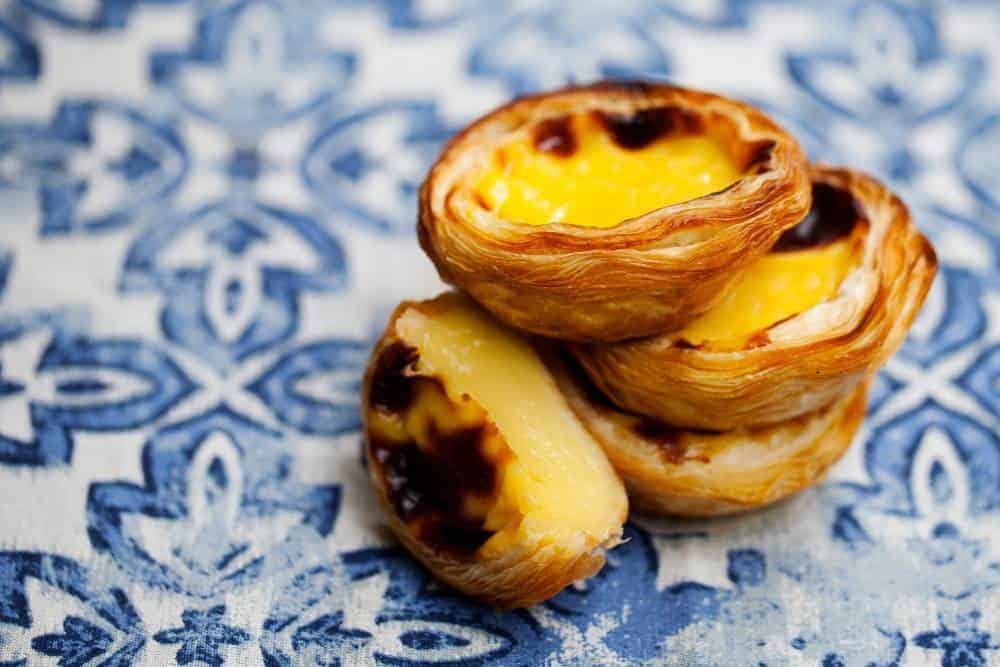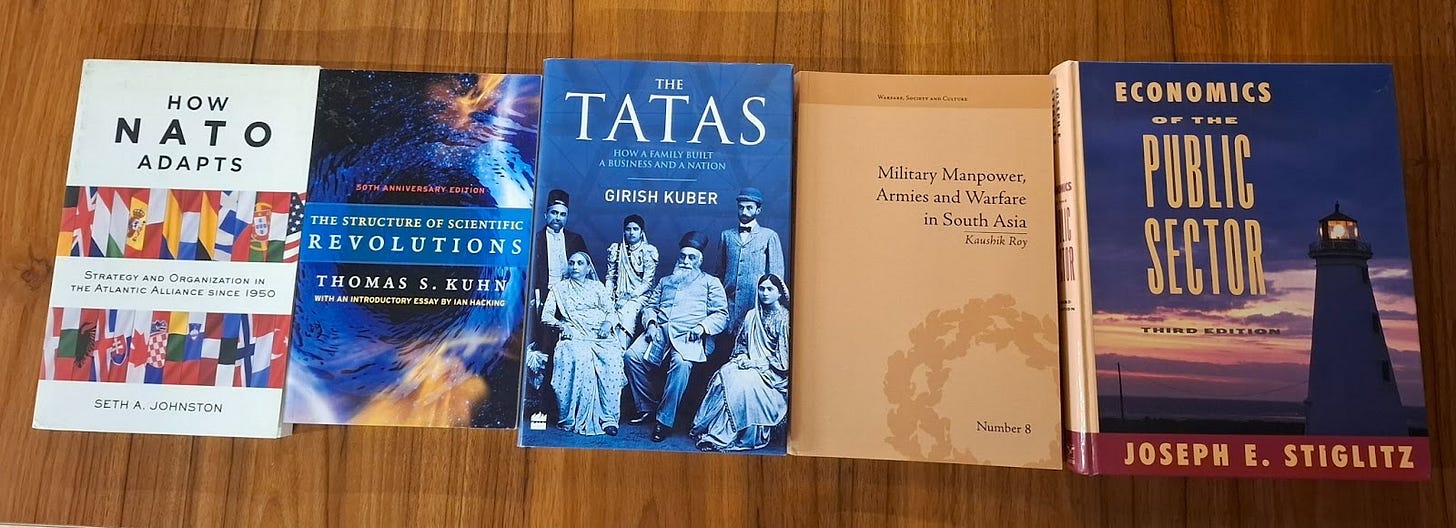Pastel de Belém-Flavoured AI Chips
Just outside Lisbon, on Rue de Belém 84, you’ll find the Antiga Confeitaria de Belém. This famed Portuguese bakery draws locals and tourists alike all because of a little dessert: the pastel de Belém.
The dessert is an egg custard-filled tart encased in a light, flaky pastry and dusted with cinnamon and powdered sugar, if you’re lucky (note to our epicurious readers: ‘pastel de nata’ is the generic name used for any egg custard tart made outside of Belém).
While the sweet delicacy can be found in former Portuguese colonies the world over, this bakery reportedly holds a unique distinction: they have the original recipe for the pastel de Belém, first crafted in 1837.
But this famed bakery doesn’t take complete credit for the invention of the tart, an honour reserved for the Jerónimos Monastery, located a mere 250 meters away from the bakery. By many accounts, the dessert has humble origins. It was created from the excess yolk left over after egg whites were used to starch the habits, cassocks and robes of monks and nuns at the Monastery.
Following Portugal’s 1820 Liberal Revolution (which purportedly led to the closing of religious institutions) these yolks found new use when mixed with inexpensive sugar and baked in the Monastery’s ovens (and sold to raise funds for the Monastery). And so the pastel de Belém was born.
Please indulge me with one tangential point here, patient reader: the pastel de Belém’s tryst with India. One unsolved mystery is why this famed dessert never found a re-interpretation in one of the most notable Portuguese colonies in India: Goa. One contemporary Indian chef, Heena Punwani quizzically admits, “During our extensive research on Goan-Portuguese cuisine, we found no evidence of pastel de nata in Goa.”
The heavy yolk content leads to the tart being easily spoiled and may explain why the coastal state never ventured into pastel production until contemporary Indian chefs introduced the dessert to Goa's food scene (interestingly, the excess yolk left over from similar starching activities led to the creation of Goa’s famed bebinca, which traces its roots to the same laundry-related problems in the 16th century Convent of Santa Monica).
We return, however, to the original path of exploration: the origins of the pastel de Belém.
There are a total of six people at the Antiga Confeitaria de Belém who are privy to the otherwise privileged recipe: three of the bakery’s owners and three chefs who have worked at the bakery for over 40 years. It is reported that these three chefs prepare the dough and custard filling behind a closed door in the bakery, with an ominous label on it that declares: Oficina do Segredo (secret office).
Unlike the recipe guardians of this little Portuguese tart however, Takshashila’s High-Tech Geopolitics Programme has no qualms about sharing the recipe for the best way for India to navigate the US’ Framework for Artificial Intelligence Diffusion.
Research Analyst Ashwin Prasad and Satya Sahu’s recent blog outlines how India can procure AI chips under controlled conditions, using four pathways under the Framework:
1. National Validated End User (VEU) Authorisation Mechanism;
2. One-Time Licences Mechanism (Based on Country-Specific Limits);
3. Licence Exemptions Mechanism (For Small-Scale Deployments);
4. General VEU Authorisation Mechanism.
For a closer look at their detailed analysis on each of these pathways (or the exact recipe to follow, per the pastel analogy), follow this link.
P.S.: If you find yourself curious for the recipe for a pastel de Belém (or nata), see here.
A Path for India in an Evolving World Order…
In his recent column in The Mint, Takshashila Co-Founder, Narayan Ramachandran examines the current state of global power dynamics and has some timely advice to offer to emerging powers, and India, in particular:
For emerging powers, it is a delusional distraction to believe that the world is well and truly multi-polar. This may result in inappropriate priorities and misallocated resources. These countries would do better to focus on the building blocks that get them closer to their aspirational pole status. The most important building block is economic strength and diversity, apart from trade networks.
For India, creating inclusive prosperity for its people should be the main focus for the next two decades. As and when India achieves upper-middle income status, and its fiscal and current accounts attain a better balance (from the deficits of today), then New Delhi will more naturally be invited to the high table.
To read his commentary in full, including his specific guidance for India’s policy decision makers, follow this link.
A Tryst with Destiny: A New Episode of The Great Power Show!
In his latest episode of his new podcast, The Great Power Show, Takshashila Chairperson of Indo-Pacific Studies Programme, Manoj Kewalramani, is in conversation with Dhruva Jaishankar, Executive Director of ORF America.
Together, they unpack knotty questions around how Indian leaders have seen the country’s place in the world and how these views of power and order have changed over time.
To listen in to the many salient points of discussion they cover, see this link.
Geopolitics is the Name of the Game (China’s Hydropower Project Edition)…
In his recent Op-Ed in The New Indian Express, Takshashila’s Head of the Geospatial Research Programme, Dr Y. Nithiyanandam asserts that there are nuanced considerations around China’s construction of the world’s largest hydropower project.
To read his analysis in full follow this link.
Bolstering Capacity of Cities?
8,000. This number represents the total number of cities in India (per the 2011 Census), with urban areas in India accounting for 36% of India’s population and 70% of GDP. The need of the hour is however greater job growth and cities play a vital role in this.
But how can the potential of such urban centres be unlocked to contribute to greater job growth? Fear not, dear reader. Takshashila Research Intern, Miheer Karandikar’s recent discussion document examines exactly that.
To read his detailed analysis in full, including his four policy recommendations to remedy this challenge, follow the link provided.
China’s and Climate Change: All Things Policy Episode of the Week!
This week’s All Things Policy Episode of the Week sees Indo-Pacific Studies Programme Research Analyst, Rakshith Shetty in conversation with Lauri Myllyvirta, Co-founder and Lead Analyst at the Centre for Research on Energy and Clean Air.
Their conversation leads them to examine China's energy transition, including the possibility of a “3.0 NDC” (Nationally Determined Contributions).
To listen to their insightful conversation, follow this link.
Takshashila Tabletop Trove!
Welcome back to the Tabletop Trove of Dispatch! As you may well know, this section is intended to be a virtual repository of the books that sit at a high-table located in Takshashila’s physical office space in Bengaluru, Karnataka.
This week’s theme is ‘Institutions of Power’ as curated by our Indo-Pacific Studies Staff Research Analyst, Anushka Saxena:
How NATO Adapts: Strategy and Organisation in the Atlantic Alliance Since 1950 (Seth A. Johnston)
The Structure of Scientific Revolutions (Thomas S. Kuhn)
The Tatas: How a Family Built a Business and a Nation (Girish Kuber)
Military Manpower, Armies and Warfare in South Asia (Kaushik Roy)
Economics of the Public Sector (Joseph E. Stiglitz)
This edition of the Dispatch was written by Kripa Koshy, Programme Manager for Takshashila’s Post Graduate Programme in Public Policy.





